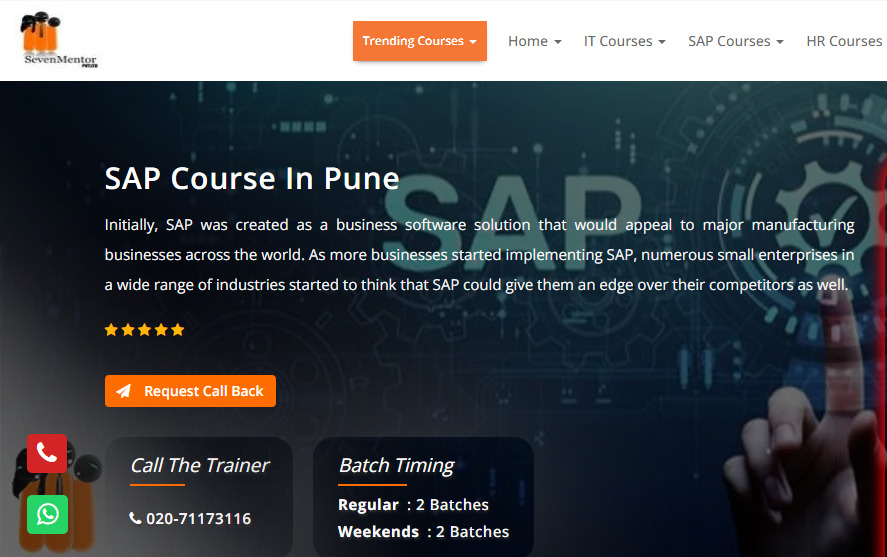
In today's rapidly evolving business landscape, organizations are continually seeking ways to optimize their operations and enhance efficiency. One of the key elements in achieving this goal is the seamless integration of various business processes. SAP (Systems, Applications, and Products) stands out as a robust enterprise resource planning (ERP) solution that plays a pivotal role in streamlining business functions. Implementing effective SAP integration strategies is crucial for organizations looking to achieve a cohesive and interconnected business environment. Visit - SAP Classes in Pune
Key Components of SAP Integration:
Data Integration: Successful SAP integration begins with the harmonious exchange of data across diverse systems. This involves connecting SAP with other applications, databases, and third-party platforms to ensure a unified flow of information. Data integration enables real-time access to critical business data, facilitating quicker decision-making and enhancing overall operational efficiency.
Application Integration: Businesses often utilize a variety of applications to meet specific operational needs. SAP integration involves connecting these disparate applications to enable seamless communication and data sharing. This can be achieved through middleware solutions that act as bridges between different applications, ensuring a cohesive and interconnected application landscape.
Process Integration: Streamlining business processes is at the core of SAP integration strategies. By mapping and integrating end-to-end business processes, organizations can eliminate silos and bottlenecks, fostering a more agile and responsive operational environment. Process integration also allows for the automation of workflows, reducing manual intervention and minimizing the risk of errors.
Cloud Integration: With the growing prevalence of cloud-based solutions, integrating SAP with cloud services has become imperative. Cloud integration ensures scalability, flexibility, and accessibility, enabling organizations to leverage the benefits of cloud technology while seamlessly incorporating SAP into their IT ecosystem. This approach is particularly beneficial for businesses with a distributed workforce or those looking to optimize infrastructure costs.
APIs and Microservices: Application Programming Interfaces (APIs) and microservices play a vital role in SAP integration. APIs enable different software systems to communicate and share data, while microservices provide a modular and scalable architecture. Leveraging these technologies facilitates a more agile and adaptable SAP integration strategy, allowing businesses to respond swiftly to changing market demands.
Benefits of Effective SAP Integration:
Enhanced Efficiency: A well-integrated SAP system leads to streamlined processes, reducing manual efforts and operational redundancies. This, in turn, enhances overall efficiency, enabling organizations to focus on strategic initiatives rather than routine tasks.
Improved Decision-Making: Real-time access to accurate and consolidated data ensures that decision-makers have the information they need at their fingertips. This promotes informed decision-making, contributing to the organization's agility and competitiveness.
Cost Savings: By automating processes and optimizing workflows, SAP integration helps organizations cut costs associated with manual tasks, errors, and inefficient operations. It also allows for better resource allocation and utilization.
Customer Satisfaction: Seamless integration positively impacts customer-facing processes, such as order fulfillment and customer support. This leads to improved customer satisfaction and loyalty, as organizations can deliver faster and more reliable services. Visit - SAP Training in Pune


Load more comments